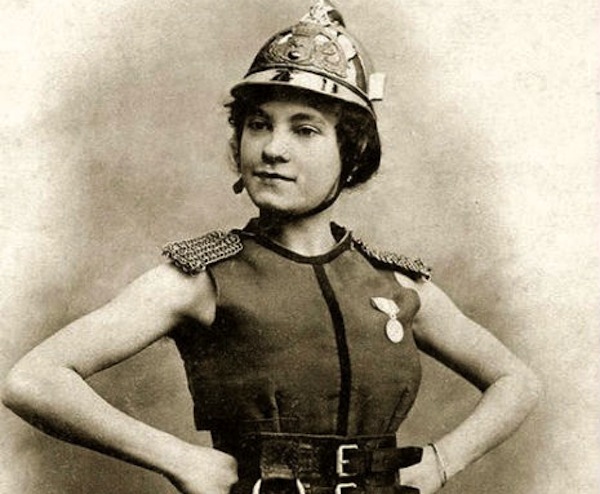【Thailand】
Everyone Loves a Good Citation Scandal,Thailand and Other News
On the Shelf

How an early twentieth-century French artist thought women firefighters would look.
- Today in the thrill-a-minute world of annotation: well before Genius began its quest to annotate the world (or at least the internet), scholarly annotations of modern books for popular audiences delighted the readers of the 1960s. “The science fiction writer Isaac Asimov, for instance, produced annotated versions of Don Juan, Paradise Lost, and Gulliver’s Travels in the 1970s and eighties … The list of books that have been annotated for a popular audience is now in the high dozens … Annotation is a form of literary lingering: It allows us to prolong our experience with a favorite book, to hang around the world of a beloved text a bit longer. But it can also serve as a gateway, for younger readers, to the pleasures of scholarship, by pointing to a larger universe of knowledge beyond.”
- And there’s news, too, of annotation’s sexy, scandalous cousin, citation. The venerableJournal of Criminal Justicedecided to boost its “impact factor”—calculated by the average number of citations a journal receives—by citing itself over and over and over again. It’s thus managed to be both number one in its field and widely suspected of malfeasance. “In the most eyebrow-raising instance, one four-paragraph editorial, published in 2014, didn’t take up even a single page yet managed to have forty-seven citations, all to the Journal of Criminal Justice.”
- No one knows if Pynchon wrote the novel Cow Country, but people are pretty sure—roughly 100 percent sure—that he wrote this haunting 1966 essay on the aftermath of the Watts riots, which is, given its author’s caginess and flights of fancy, exceptionally well reported: “Except for the use of the words ‘Negro’ and ‘Caucasian,’ Pynchon’s essay reads as if it could have been written this past summer, almost a half-century later. Its downbeat premise, delivered in the voice of a young disciple of Malcolm X, is no less contemporary.”
- In 1902, the French artist Albert Bergeret designed Women of the Future, a series of trading cards depicting women at work in professions typically reserved for men: your doctor types, your lawyer types, your military-fencing master types. His feminist ambition is laudable; his insistence on skimpy outfits for the female generals and sergeants of the future, less so …
- “This is all work by local artists and craftspeople … We have yoga classes on Wednesdays and Fridays. It’s just a really great community space … All of our parenthetical duck bidets are ethically sourced in Nicaragua. The lettering on our storefront was painted with sea foam scraped lovingly from the back of a nursing beluga whale combined with a special dye extracted from Welsh nuns. Extracting dye from nuns is, contrary to popular belief, completely painless.” The cynical, no-bullshit New Yorker has been replaced with the humorless, self-serious, astrology-obsessed post-hipster, and now we all must suffer.






Related Articles